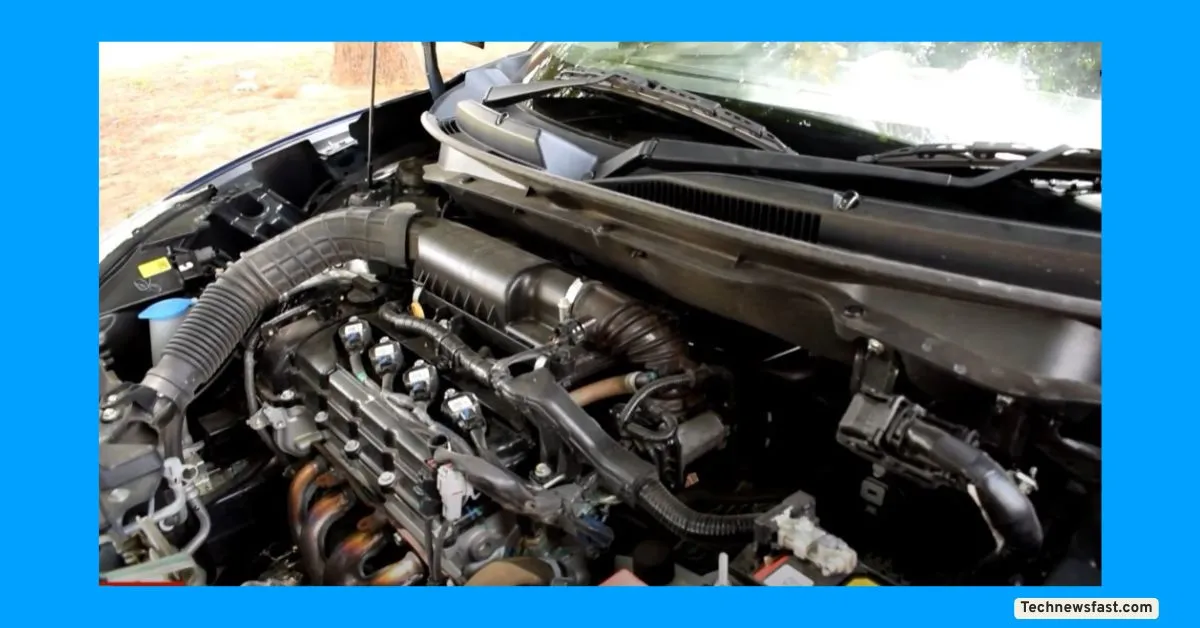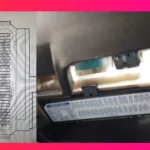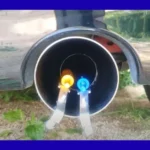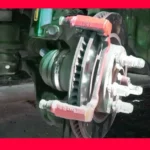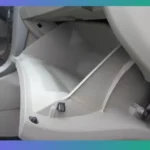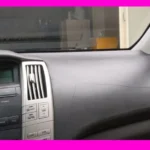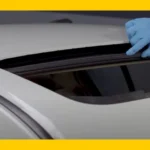Car electrical problems can stop your journey in seconds. Suddenly the windows won’t go down, the wipers freeze, or your radio goes silent. Often, a simple blown fuse is the culprit. If you’ve wondered how to fix a blown car fuse box or struggled with “car fuse won’t come out” moments, you’re not alone. Let’s clear the confusion, using the Maruti Suzuki Swift as an example, and help you handle blown fuses at home with confidence.
Fuses protect the car’s electrical system, acting like a safety valve. When there’s too much current, the fuse breaks the circuit to stop damage or fire. Handling these tiny components doesn’t need to feel mysterious. This post makes it simple: where to find fuses, how to remove and inspect them, and what to replace them with, all in clear steps you can follow at home.
What Is a Car Fuse Box and Why Does It Matter?
Modern cars rely on dozens of electrical circuits, from the headlamps to the power windows and radio. A fuse box houses the fuses that protect each of these circuits. If a component draws too much power—due to a short circuit or a fault—the fuse melts its link wire and shuts that circuit down. That’s why everything in that electrical path, like your radio or lighter, might stop suddenly.
Most cars, including the Maruti Suzuki Swift, have three fuse boxes:
- Main (Master) Fuse Box
- Primary Fuse Box
- Secondary Fuse Box
All cars have similar fuse coding, even if their locations differ. So, if you learn with one model, you can adapt to almost any car.
Quick Fuse Box Locations:
- Main Fuse Box: Near the battery’s positive terminal in the engine bay.
- Primary Fuse Box: Inside the engine bay, easily accessible once the hood is open.
- Secondary Fuse Box: Under the dashboard or near the steering, sometimes behind the glove compartment.
Knowing these locations is your first step to controlling your car’s health.
Where Are the Car’s Three Fuse Boxes?
Main Fuse Box
Open your car’s hood and look near the battery’s positive terminal. Here, you’ll spot the main fuse—a chunky 120-amp component. Its job is to protect big circuits like the ignition and charge system. If this fuse blows, you’ll notice all electronic features stop working at once.
Primary Fuse Box
Still under the hood, close to the engine, sits the primary fuse box. This box houses fuses for vital systems like the radiator fan, lighting, and AC compressor. Each slot is clearly marked with its amp rating.
Secondary Fuse Box
Inside the Swift, the secondary fuse box sits below the dashboard or near the steering wheel, sometimes tucked behind the glove box. In some other cars, check under the steering column. You’ll need to open or even remove the glove box for easy access.
Tip: While locations can shift by car brand, the coding and logic on the fuse labels are almost always identical. If you get comfortable with these steps, you’ll be able to fix a blown car fuse at home for almost any vehicle.
How to Remove and Open the Secondary Fuse Box
If you’re trying to access the secondary fuse box in your Swift (or similar hatchbacks), follow these steps:
Step 1: Remove the Glove Box
- Open the glove box completely.
- Locate the two small plastic pins or “notches” on each side.
- Gently pull these notches inward. This frees the glove box so it can pivot down or lift out.
Step 2: Find the Fuse Box
- With the glove box removed, look for a small black box with several wires entering it.
- This black unit is your secondary fuse box.
Step 3: Opening the Fuse Box
- Look for the fasteners or simple snaps on either side of the box.
- Press or pull gently to free the lid.
If a fuse won’t come out, don’t force it with your fingers. Use a fuse puller—most cars supply one in the fuse box lid or toolkit. The right tool avoids breaking the fuse off in the fuse box in car interiors. If you snap a fuse, extraction gets a lot harder and could require professional help.
Understanding the Primary Fuse Box and Its Fuses
When you move to the engine bay, the large primary fuse box protects several high-current circuits. Follow these steps to open and understand it:
Steps to Open the Primary Fuse Box:
- Find the plastic cover, usually secured by snaps or small latches.
- Press the latch or clips, then lift the cover upwards.
- Inside, you’ll find rows of fuses (in various colors) and perhaps a fuse legend on the reverse side of the lid.
Fuses and Relays: What’s What?
- Relays: These are larger cube-shaped modules. They control high-load functions like the radiator fan, compressor, and wiper motor. Relays act as switches, letting small dashboard switches control heavy circuits without burning out.
- Fuses: Smaller, often colorful blade-type parts marked with numbers (10, 15, 30—signifying amp ratings).
Why Fuses Blow If a component draws more power than its fuse rating, that fuse melts and breaks the connection. For instance, if your headlight circuit, protected with a 15-amp fuse, suddenly tries to draw 20 amps due to a wiring fault, only the fuse will be sacrificed—preventing a much bigger problem.
Quick Swap Trick Let’s say it’s night and your headlight fuse has blown, but you don’t have a spare 15-amp fuse. In a pinch, you can pop in a 20 or 25 amp fuse for just a short drive. It’s not ideal since a higher-rated fuse may fail to blow in time if a real fault is present. This is just a survival move, not a fix to rely on.
Common Fuse Types and Their Applications:
- 10A, 15A, 20A, 30A blades: headlights, tail lamps, power locks, wipers, horn, cigarette lighter, AC compressor.
- Relays: radiator fan, wipers, AC clutch, fuel pump.
Removing, Testing, and Replacing Car Fuses
How to Remove a Car Fuse:
- Always turn off the ignition.
- Use a fuse puller or needle-nose pliers. Avoid yanking with your fingers—if a fuse broke off in the fuse box in car interiors, it gets tough to remove.
- Grip the part of the fuse above the base, not the colored plastic.
- Pull straight out, gently wiggling if needed.
How to Check if a Car Fuse Is Blown:
- Hold the fuse up to the light.
- Inside the fuse’s clear-colored plastic, look for a thin metal strip or “wire.”
- If the wire is intact, the fuse is still good.
- If you see a gap or break, or if the strip is blackened or melted, it’s a blown fuse.
For cigarette lighter circuits and radios, the steps are nearly the same. If you need to know how to fix a blown fuse in a car cigarette lighter or how to fix a blown fuse in a car radio, just locate the right fuse according to the label on the box lid and swap it out for a same-amp replacement.
Steps to Replace a Blown Fuse:
- Match the old fuse’s amp rating with the new one. Never use a higher value unless it’s a short-term solution in an emergency.
- Insert the fuse firmly into the slot. Make sure it sits flush and does not wiggle.
- Close the fuse box cover tightly.
If a fuse broke off in the fuse box in the car and you can only get the plastic body out, a straightened paperclip or small tweezers can sometimes reach the remaining metal prongs. Always disconnect the battery first for safety.
Decoding the Fuse Box Lid Diagram
Ever noticed the chart or symbols on the inside of your fuse box lid? This is your roadmap.
Why the Diagram Matters: Every fuse is matched to a specific car part. The symbols or codes on the lid tell you what each fuse protects and the correct amp rating.
Examples from the Maruti Swift:
| Fuse Code | Function | Typical Amp Rating |
|---|---|---|
| 3830 | Starter Motor | 30A |
| BAT.SAV | Battery Saver | 15A |
| ABS-MTR | ABS Motor | 30A |
| RR DEF | Rear Defogger | 20A |
| PWR WDW | Power Windows | 15A or 20A |
| FUEL PMP | Fuel Pump | 15A |
| H-LP RH/LH | Headlamp Right/Left | 15A |
| AC COMP | AC Compressor | 10A |
| RADIATOR | Radiator Fan | 30A |
| HAZARD | Hazard Lights | 10A |
| AUDIO | Radio/Infotainment | 15A |
| CIGAR | Cigarette Lighter | 15A |
The back of the lid also shows spare fuses for emergencies and a diagram showing the arrangement of the fuses. Before you replace any fuse, study the diagram to make sure you’re working with the right circuit.
If you’re dealing with a specific problem—like “how to fix a blown fuse in the house” or a car cigarette lighter that’s stopped working—use the chart and swap only the correct fuse.
Car Fuse Care: Tips and Common Mistakes
Fuses are the unsung heroes of your vehicle, but poor handling spells trouble. Follow these tips for smooth repairs and reliable car function:
Fuse Do’s:
- Always replace fuses with the exact same amp rating.
- Use a fuse puller (if your car didn’t come with one, buy a small one).
- Keep spare fuses in your glove compartment.
- Check the fuse box diagram to avoid confusion.
Fuse Don’ts:
- Don’t force stuck fuses: if the car fuse won’t come out, use the right tool.
- Don’t use makeshift items (like foil or wires) as fuse replacements.
- Don’t ignore repeated blown fuses—persistent problems signal deeper electrical issues.
- Never use a fuse with a higher amp unless in absolute emergencies, and swap it back as soon as possible.
Tip: Regularly inspect all fuses every three months, especially if you drive daily. Dust, moisture, and age weaken fuse connections.
Conclusion
Blown car fuses can stop your daily routine, but they’re simple and cheap to fix once you know how. Locating your fuse boxes, learning to use a fuse puller, and matching amp ratings are skills every driver should have. With the right approach, you can tackle problems like “how to fix a blown car fuse box,” “how to fix a blown car fuse at home,” or even those annoying times when a car fuse won’t come out.
Read also.
